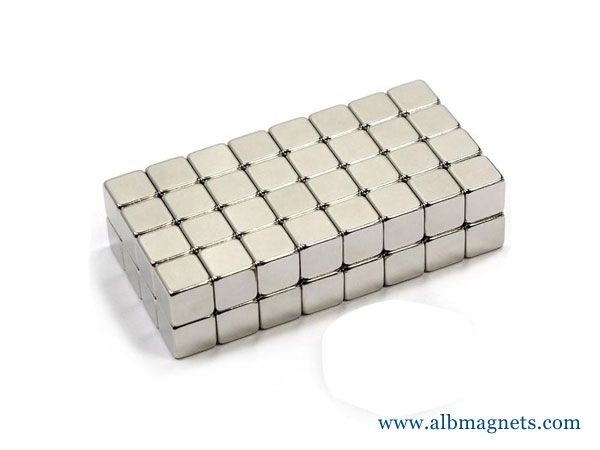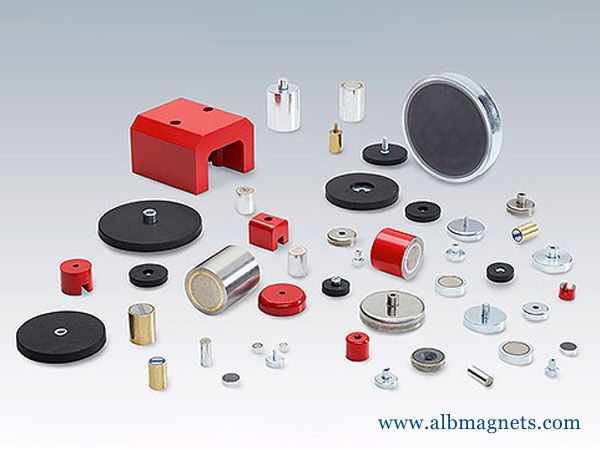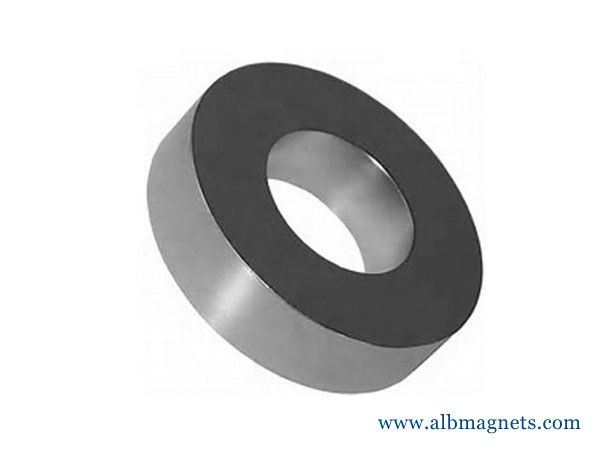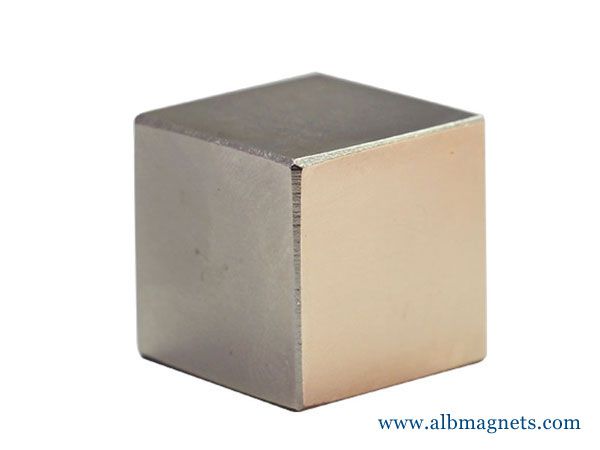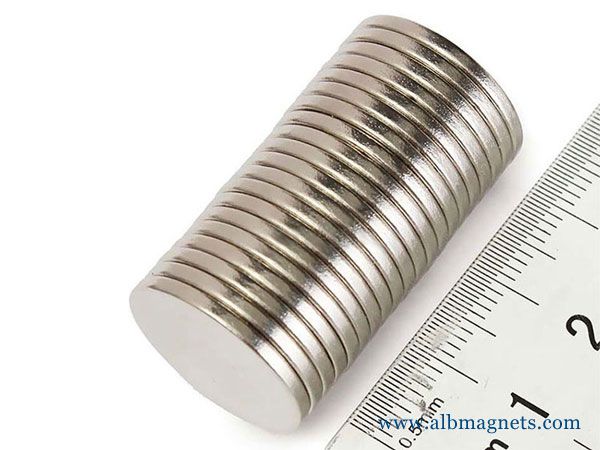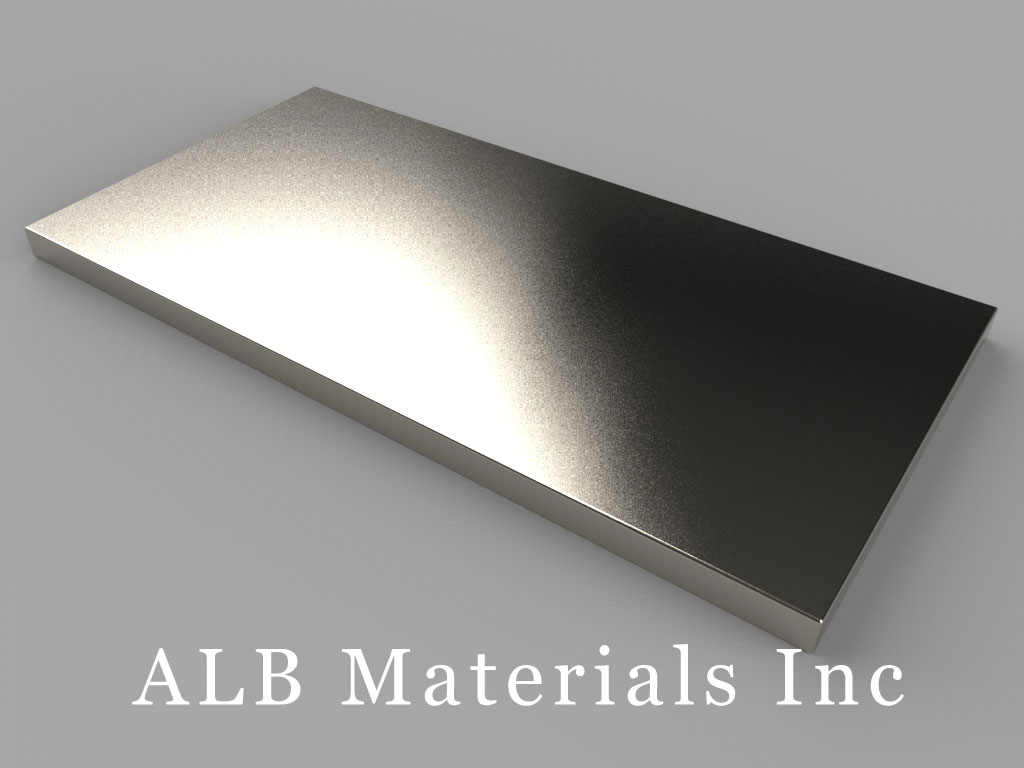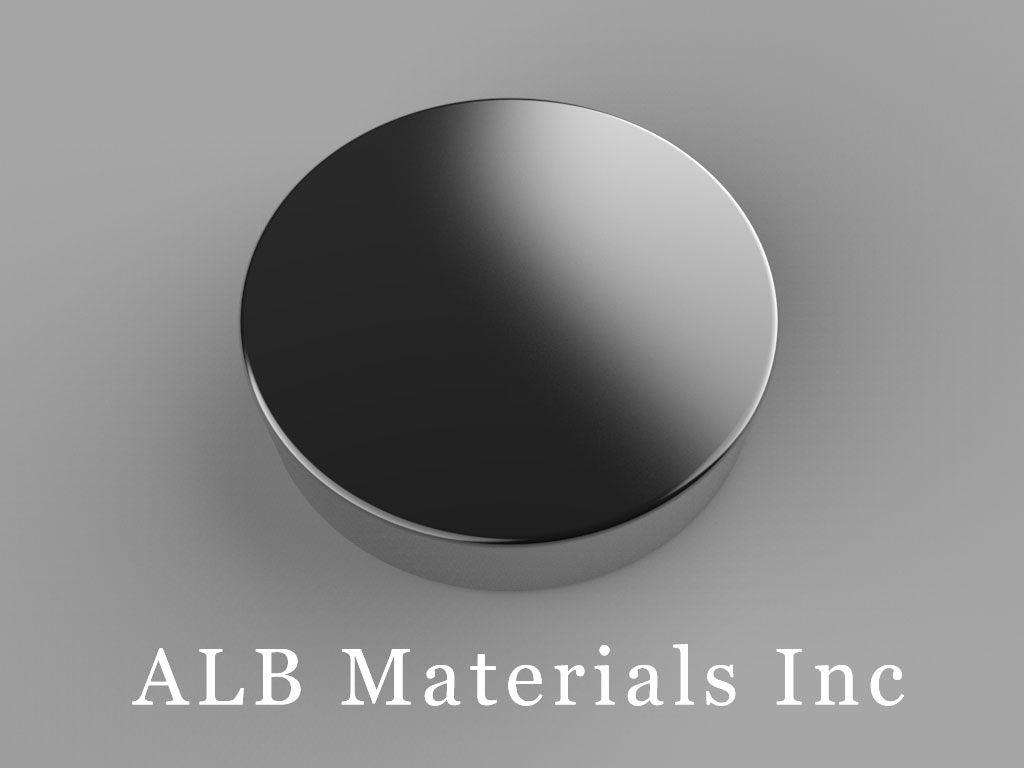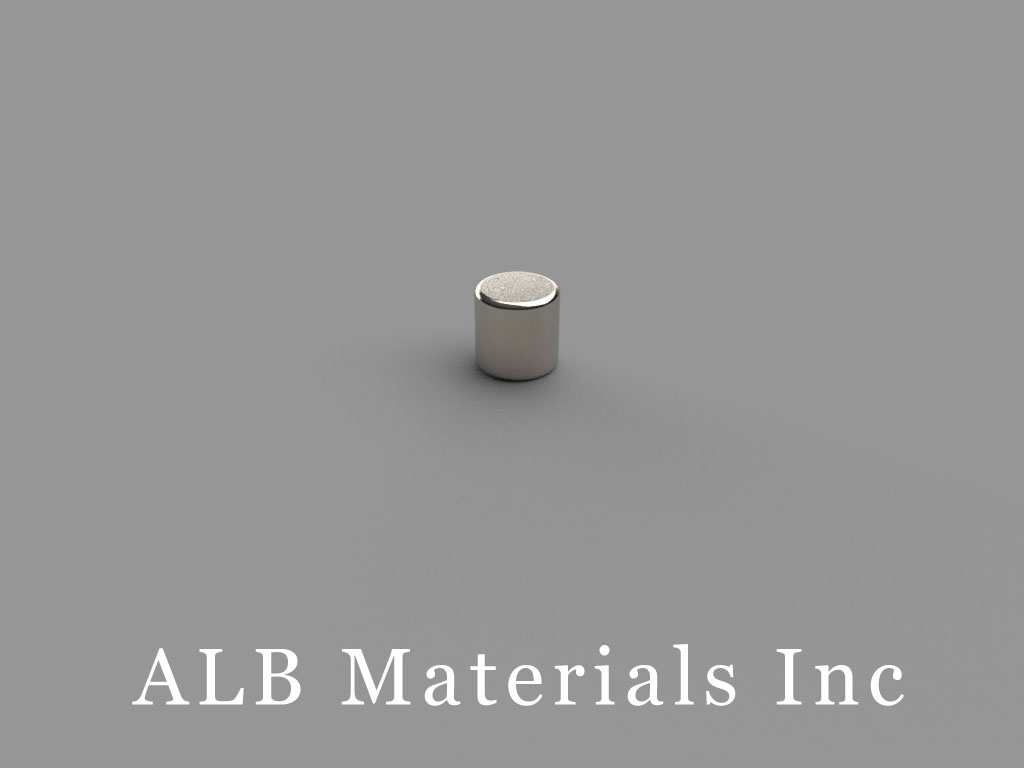401 Ryland St. Ste 200-A,
Reno, NV 89502
United States
E-mail: sales@albmaterials.com
- D6x5mm Neodymium Magnet, 6 x 5mm Disc Magnet
- POT05 Series Mounting Magnets and Pot Magnets
- BZ0Z08-N52 Neodymium Magnets, 3 inch x 3 inch x 1/2 inch thick
- D20x2.5mm Neodymium Magnet, 20 x 2.5mm Disc Magnet
- MMR-A-Y8 Rectangular Mounting Magnets
- DA6 Neodymium Magnets, 5/8 inch dia. x 3/8 inch thick
- B25x8x4mm Neodymium Magnet, 25 x 8 x 4mm Block Magnet
- SX0 Neodymium Magnets, 1 inch diameter
- DBC Neodymium Magnets, 11/16 inch dia. x 3/4 inch thick
- D50x7mm Neodymium Magnet, 50 x 7mm Disc Magnet
- DX8A Neodymium Magnets, 1 1/2 inch dia. x 5/8 inch thick
- DX0E Neodymium Magnets, 1 inch dia. x 7/8 inch thick
- DX8X0 Neodymium Magnets, 1 1/2 inch dia. x 1 inch thick
- DDH2 Neodymium Magnets, 13/16 inch dia. x 2/10 inch thick
- D4H1 Neodymium Magnets, 1/4 inch dia. x 1/10 inch thick
- D29 Neodymium Magnets, 1/8 inch dia. x 9/16 inch thick
Application Of Magnet
application of magnet
10 Uses for Magnets
Improve home heating, give your water heater a longer life and eight other uses for magnets
In the 6th century B.C., Thales of Miletus, a Greek wise man, reasoned that a magnet's power of attraction was the result of science, not magic.
After that, it was only a matter of time (okay, a few millennia) before magnets turned up in TVs, turbines, computer hard drives, and on the fronts of fridges everywhere.
Their stick-to-itiveness—in the form of iron horseshoes, shiny rare-earth bars, or vinyl-coated magnetic sheets—is also helpful for a host of household projects.
Use magnets to:
1. Locate metal studs in a wall.
2. Seal off air-conditioning vents to improve home heating by placing vinyl-coated sheets over the steel register faces.
3. Hang Polaroids of projects-in-process on the lip of a metal shelf above the workbench.
4. Collect nails from a porch repair job that have fallen in the grass.
5. Prevent corrosion inside your water heater;
a magnet placed on the freshwater intake pipe catches damaging metallic calcium particles before they can get inside.
6. Pin blueprints onto the side or hood of the truck.
7. Create a bulletin board without the use of tacks, tape, or hooks on walls coated with "magnetized" paint containing metals.
8. Protect a tractor's engine: Ceramic magnets placed in the oil pan will attract steel bits that get into the oil from grinding pistons.
9. Fasten steel framing squares to the outside of toolboxes for quick access by gluing magnets to the box sides.
10. Clean up metal shavings that have fallen from the bench grinder onto the workshop floor.
5 other High-Field Magnet Applications
high-energy physics and controlled nuclear fusion, are areas where magnetic fields already play a very large role.
Particle accelerators and detectors, and devices for generation and control of hot hydrogen plasmas, require enormous magnets, with stringent demands on field geometries as well as requirements for the highest practical field strengths.
In the United States, design and development of such magnets have largely been carried out at laboratories supported by the Department of Energy (DOE), but collaborations with the National Institute of Standards and Technology (NIST), universities, and the National High Magnetic Field Laboratory (NHMFL) have also been involved.
A detailed discussion of the requirements of these magnets and the challenges they pose for high-field magnet technology will be discussed in Chapter 7 of this report.
Here, we present a brief reminder of the scientific motivation for these projects.
In particle astrophysics, large magnets with strong magnetic fields have been employed in several ground-based experiments designed to look for axions, or axion-like particles, of solar or cosmological origin.
Space-based experiments have, so far, made use of only magnetic fields that are rather weak relative to the scale considered in this report.
However, improvements in the design of superconducting magnets, particularly a reduction in their consumption of helium and an extension of field lifetime, could give them an important role at some time in the future.
Particle accelerators using superconducting magnets could also play a role in health care in instruments for radiotherapy.
the committee summarizes briefly the advantages that could be gained from such accelerators.
The challenges involved are discussed in Magnet Technology Development.
HIGH-ENERGY PHYSICS
Reports of the recent success of the Large Hadron Collider (LHC) in facilitating the discovery of the long-sought-after Higgs boson of the Standard Model of particle physics have garnered much interest among physicists, in addition to capturing the imagination of many nonscientists worldwide.
This achievement stands as a prominent example of the triumph of superconducting magnet technology.
High magnetic fields are used both in the particle accelerator itself and at various places in the detectors used to observe the collision products.
Magnets at the LHC are all superconducting, as the power and cooling requirements for resistive magnets would be entirely prohibitive.
Accelerators employ bending magnets to keep the particle beams in a circular track and use focusing magnets of various kinds to prevent the beams from spreading out in space as they circulate.
The bending magnets use uniform magnetic fields, oriented in the vertical dimension, while the focusing magnets require nonuniform fields, with carefully designed gradients, in order to function properly.
High fields for the bending magnets are necessary to achieve the highest possible beam energies for a given accelerator radius.
Although the magnetic field strengths of superconducting magnets for high-energy and nuclear physics applications do not approach the present level of laboratory research magnets, i.e., 1 GHz NMR, they do require mostly nonsolenoidal geometry to be useful for charged-particle beam bending (dipoles), focusing (quadrupoles), and error field correction (sextupole and higher-order).
They have borne tube diameters on the order of 50 mm but with magnetic field lengths approaching 20 m.
The largest detector magnets are often solenoids, but of unprecedented scale, complexity, and stored energy.
Accelerator physicists have already begun to envision the next generation of particle accelerators in the form of a muon collider enabled by high-temperature superconducting magnet technology.
Such a device would require solenoidal magnets with a central field as high as 50 T.
Several collaborations have been established, involving industry, universities, and government laboratories, to further the development of magnets necessary for such a project.
Applications of Magnetic Field
Descriptions and explanations of some applications of the concept of the magnetic field are presented below.
Applications such as electromagnets, AC and DC electric motors, electric generators, electric transformers, electromagnetic wave propagation, maglev (Magnetic Levitation) and magnetic Resonance Imaging system are all discussed.
Electromagnets
Electromagnets are magnets where the magnetic field is produced by an electric current.
They are made up of a large number of turns of wire in order to create strong magnetic fields.
Electromagnets can be switched on and off and are therefore flexible means of displacing heavy metallic objects from one point to another.
Electromagnets have many uses in industry.
Electric Motors
A) DC motor principle
A DC motor is based on the idea that if a current-carrying loop is situated in a magnetic field, magnetic forces act on the loop.
The magnetic field is that of a static permanent magnet and is called the stator (from static).
The force acting on the loop gives it a movement of rotation hence the name rotor (from rotation) for the loop.
B) AC motor principle
An AC motor is made up of a stator which is a group of electromagnets designed to produce a rotating magnetic field when fed with AC (alternating current).
Inside the stator, there is a rotor made up of suspended conductors.
Since the magnetic field produced by the stator is rotating, it is, therefore, changing (the magnetic field is a vector quantity) which according to Faraday's law it produces an electric current in the rotor.
The current in the rotor, in turn, produces a magnetic field which according to Lenz's law opposes the magnetic field that produced it which is the magnetic field in the stator.
Hence the rotor tends to try to eliminate the difference between the speeds of rotation of the field produced by the stator and the speed of the rotor since this difference in speed gives rise to induced emf in the rotor.
However, the rotor never catches up with the rotating field produced by the stator.
Hence a sustained rotation of the rotor.
Electric Generators
An electric generator is a device that converts mechanical energy into electrical energy using the principle of electromagnetic induction discovered by Michael Faraday: a difference of voltage is created between the end of an electric conductor moving in a magnetic field.
This difference of voltage can be used to move electric charges thus generating an electric current.
Electric Transformers
See How do Electric Transformers Work? in this website.
Electromagnetic wave propagation
Electromagnetic waves are a combination of changing electric and magnetic fields that transport electromagnetic energy from one point to another.
The electric and magnetic fields associated with electromagnetic waves are vectors in planes perpendicular to each other.
The direction in which the electromagnetic energy propagates (transport electromagnetic) is perpendicular to the two planes containing the electric and magnetic fields.
Some of the well-known systems that use electromagnetic waves are antennas, waveguides, radio and TV broadcasts, radar, satellite, optical fibers, etc...
Maglev (Magnetic Levitation)
Maglev is the fastest trains system in the world and they use the basic principles of attraction and repulsion in magnetism.
A maglev train is suspended (levitated) above a track without touching it to reduce friction using magnetic repulsion and propelled by a linear induction motor.
Hence magnetic field is used for both levitation of the train and its propulsion.
Magnetic Resonance Imaging
An MRI (Magnetic Resonance Imaging) system in medicine uses a combination of a magnetic field and radio (electromagnetic) waves to generate images of parts of the human body, such as the brain, spine, joints, abdomen, breast, heart and many other parts of the body.
The images generated are then analyzed in order to find out if a given body part is functioning normally or not.
Common Applications Of Neodymium Magnets
Neodymium magnets are the strongest in the world and have thousands of uses including everyday objects.
Because of their strength, even tiny magnets can be effective.
This also makes them incredibly versatile;
as each of us goes about our modern lives, we are never far from a neodymium magnet, you are likely to have one in your pocket right now, or if you are reading this article on a smartphone, you might even have one in your hand!
Since the creation of the first neodymium magnet, they have been used for many purposes.
Industries such as electrical motor manufacture, medical science, renewable energy, and technology all rely on the super-strength neodymium magnets.
Without which, many of the advancements over the last 30 years would not have been possible.
They are also useful around the home, for hobbies such as crafts, modeling and jewelry making.
Because of their super-strength, incredible performance and resistance to demagnetization they can be made in many shapes and sizes, even as small as 1mm diameter, making their uses literally endless!
Did you know? A magnet 8mm in diameter and 5mm long weighs only 2 grams and yet generates a force of over 1,700 grams.
Neodymium magnets are used for:
Hard disk drives
A hard disk drive records data by magnetizing and demagnetizing a thin film of ferromagnetic material on a disk.
Each disk is separated into many tracks and sectors and each sector has many tiny individual magnetic cells that are magnetized by the drives read/write head when data is written to the drive.
Hard drive heads are made from ferrite wrapped in a fine wire coil.
When writing, the coil is energized, a strong magnetic field forms and the recording surface adjacent to the gap is magnetized.
Strong magnets are also used in the actuator that moves the read/write head into position.
Audio equipment such as microphones, acoustic pick-ups, headphones, and loudspeakers
Permanent magnets are used in speakers alongside a current-carrying coil which converts electricity into mechanical energy that moves the speaker cone that in turn changes the pressure of the surrounding air creating sound.
Microphones work in reverse;
a diaphragm is attached to a coil of wire which sits within a permanent magnet when sound moves the diaphragm the coil moves too.
As the coil moves through the magnetic field created by the permanent magnet an electrical signal is produced which is characteristic of the original sound.
Dentures
Tiny neodymium magnets can be used for attachments in corrective devices or for holding together replacement dentures where several teeth are missing.
Because of their strength, even tiny neodymium magnets can be effective and when coated they have an increased resistance to corrosion
Magnetically coupled pumps
Magnetically coupled pumps consist of a motor-driven shaft with an attached ring of powerful magnets and another smaller ring of magnets attached to another shaft connected to the impeller that sits within the larger ring of magnets.
As the motor turns the driveshaft and one set of magnets, the magnetic field generated turns the other set of magnets which powers the impeller.
With this type of motor, there is no mechanical contact between the motor and the impeller.
Magnetically coupled pumps or magnetic impeller pumps provide two main advantages over non-magnetic pumps.
Because the impeller is connected to the driving magnets and shaft by magnetism alone, if the impeller is obstructed and stops turning the motor can continue to turn without burning out avoiding any lasting detriment to the motor.
The second is relevant to applications in which liquid could potentially seep into the motor unit (for example, a pond motor) as with a magnetically coupled motor you can completely separate the motor unit from the impeller, which is usually within a hermetically sealed case.
Door catches
Neodymium magnets are used in public, commercial and residential buildings to create magnetic door catches.
Countersunk or pot magnets recessed into the surface of a door are used to attract another wall-mounted magnet or steel disk.
Strong neodymium magnets will easily hold the weight of a door and the leverage provided by the door means the magnets can be easily separated.
Motors and generators
Electric motors rely upon a combination of an electromagnet and a permanent magnet, usually a neodymium magnet to convert electric energy into mechanical energy.
A generator is reverse, it converts mechanical energy into electric energy by moving a conductor through a magnetic field.
Jewelry
Small magnets are used in the production of jewelry and for jewelry clasps.
Counter-bored neodymium magnets with opposite poles on the counter-bored faces provide a secure hold and because neodymium is the strongest magnetic material in the world a magnet just 5mm in diameter can be effective.
Bearings
Magnetic bearings use the concept of magnetic.
Magnetic therapy
Although not clinically proven, many people believe that magnets can relieve pain by subjecting parts of the body to magnetic fields produced by permanent magnets.
Because of their strength, neodymium magnets are a popular choice for believers in magnetic therapy.
ABS (anti-lock braking) system sensors
Passive ABS sensors use neodymium magnets wrapped inside copper coils.
A sensor is placed close to the ABS reluctor ring and as the ring rotates a voltage is induced in the copper wire.
This signal is monitored by the vehicle’s computer system and used to define wheel speed.
Levitation devices
Commercially, electromagnets are used for levitation applications such as magnetic levitation transport.
However, the availability and affordability of small, strong neodymium magnets mean that you can do your own magnetic levitation experiments at home.
The trick is known as diamagnetic levitation also requires a diamagnetic material such as pyrolytic graphite.
Lifting machinery
Permanent magnets are essential in the heavy engineering and manufacturing industries, used for lifting large ferrous items.
Switchable release magnets using super-strong neodymium magnets are commonly used as they are supplied with a quick-release switching mechanism.
Magnetic separators
Most processing facilities will use some form of magnetic separation system to remove contaminating ferrous and paramagnetic items from production or processing lines.
This is usually done using a form of the conveyor system and strong filter rod magnets.
Reed switches
A reed switch is a switch operated by a magnetic field.
Reed switches consist of contacts placed on ferrous reeds, encased in a sealed glass tube.
They can be designed to be open or closed by default in the absence of a magnetic field and are activated by bringing a neodymium magnet close to the switch.
A typical use for reed switches is detecting the opening and closing of doors in burglary alarm systems.
Crafts and model-making
Neodymium magnets are very popular among craft enthusiasts and model-makers.
Because they are so powerful, even a tiny magnet can generate enough magnetic pull to be effective.
They are the magnet of choice for everyone ranging from miniature wargaming enthusiasts for configuring models used in games such as Warhammer to people who make handmade stationery and cards.
Print finishing
Small neodymium magnets are widely used in the print finishing industry as a thin magnet will be powerful enough to attract another magnet even if both are secreted beneath a layer of card, paper or plastic.
We have many customers that use our magnets as hidden closures for brochures, binders, boxes, menus, and high-end packaging.
Usually, a pair of magnets are used, but the same effect can be achieved with one magnet and a steel disc.
DIY/home improvement
The uses for neodymium magnets around the home are endless;
creating door and drawer closures, hanging pictures and fixing furniture are just a few.
Recovery/retrieval
Recovering heavy ferrous items requires a heavy-duty magnet.
Large neodymium magnets are just the ticket for such tasks and can be considerably more cost-effective than other recovery or retrieval methods.
Our specially designed magnets for recovery and retrieval are capable of lifting up to 150kg.
Hanging artwork
Using magnets to hang artwork is an extremely popular solution both for professional galleries and exhibitions and homemakers.
Small neodymium magnets are capable of supporting a substantial weight, even in a shear position and means that even large pieces of artwork can be swiftly swapped and changed.
Point of sale displays
Every time you enter a shop or restaurant you might not realize that you are surrounded by neodymium magnets but they will be there.
That’s because many points of sale display advertising signs and stands use small are held together using small but strong neodymium magnets or are suspended from steel ceilings using neodymium hook magnets.
Part of the content in this article is reproduced from other media for the purpose of transmitting more information and does not mean that this website agrees with its views or confirms the authenticity of its content. It shall not bear direct responsibility and joint liability for the infringement of such works.
If there is any infringement, bad information, error correction, and other issues in the content of this page, please contact us at info@albmaterials.com
Link to this article: https://www.albmagnets.com/blog/application-of-magnet.html
How to choose and buy a strong neodymium magnet? ALBMagnets is a professional company for strong magnet design and manufacturing,
providing you with reliable N35, N38, N42, N52, N42SH and other grade super neodymium magnets and SmCo rare earth magnets.





